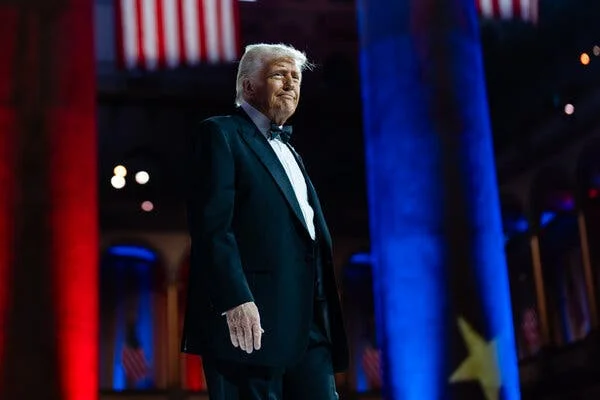
Trump’s Tariff Gambit: Relief Pause, China Clash, And A Global Economy On Edge
President Donald Trump’s sudden decision to pause sweeping tariff hikes on dozens of countries for 90 days has ignited a relief rally across global markets. Yet his intensification of duties on Chinese imports to a staggering 125% underscores an escalating economic clash between the world’s two largest economies — a standoff whose consequences will ripple far beyond tariff spreadsheets and trading pits.
The importance of this development is felt worldwide. As Trump ratchets up pressure on Beijing while temporarily de-escalating with other partners, economists warn the foundation of global supply chains — and confidence in U.S. economic leadership — faces deep uncertainty.
Shortly after imposing punitive reciprocal tariffs across-the-board, Trump stunned markets by pausing these moves for most countries. This triggered Wall Street’s best day since 2008, with the S&P 500 soaring nearly 10%, and sparked sharp rallies across Asian and European indices. In Taiwan and Japan, stocks surged over 9%. But China remains the exception: facing tariffs of 125%—by far the highest in modern U.S. trade policy—after Beijing’s own retaliatory hike to 84%. The two giants are locked in escalating tit-for-tat blows.

China’s foreign ministry denounced the U.S. moves as “doomed to fail,” with official editorials vowing Beijing “won’t cave.” Yet commerce officials left the door “open to dialogue,” hoping Washington will “meet China halfway.” Trump, for his part, mused that “China wants to make a deal — they just don’t know quite how.” So far, neither side shows signs of real retreat.
The economic fallout is multifaceted. Deutsche Bank strategists warn despite the relief bounce, “policy unpredictability remains elevated,” hurting investment. Morningstar’s Preston Caldwell calls the market “overly optimistic,” noting the average tariff still hovers near 20% globally, “with China facing a de facto embargo.” The WTO’s chief predicts bilateral trade could shrink by up to 80%, severely hitting global growth given the centrality of U.S.-China commerce.
Beneath the headlines, price shocks loom. Americans may soon pay more for everyday essentials — smartphones, laptops, fast fashion, toys — as China supplies upward of 70% of these imports. Meanwhile, possible grocery hikes could follow as tariffs touch food exporters worldwide, from bananas and grapes to seafood and coffee.
The Federal Reserve, which had hoped cooling inflation would let it ease interest rates, now faces fresh dilemmas. The spike in Chinese import costs could stoke new waves of inflation precisely as U.S. economic momentum shows signs of flagging. Policymakers tread a tightrope between curbing price surges and averting recession risks intensified by tariff shocks.
On the ground in China, the tariffs bite hard. Small factories in export hubs like Guangzhou reel as American orders are canceled. Factories scramble to pivot to other markets, but China’s own slowdown and housing crash depress domestic demand. Some managers recount being stuck with unpaid-for inventories, though many express resilience and faith in China’s long-term strength.
Strategically, Trump’s tariff salvo signals a major pivot. Unlike the old aim of shrinking trade deficits, his actions now sharply target China’s economic ascent. Allies like the EU and Japan gained a 90-day truce, with hopes to negotiate terms amid sector-specific tensions — autos for Germany and Japan, agriculture elsewhere. Britain, eager for stability post-Brexit, eyes this moment as a chance to rebrand itself as a trading safe harbor amid global turmoil.
Yet volatile swings in markets reveal persistent anxiety. As Ryan Young of the Competitive Enterprise Institute noted, “uncertainty about future policies will continue to paralyze long-term investment.” The genie of unpredictability is indeed out of the bottle — even if recent tariff pauses bought fragile respite.

This trade saga reveals a world economy teetering between protectionism and interdependence. The tariffs could spur supply chain shifts away from China — helping nations like India — but such realignments are costly and slow. For now, consumers worldwide brace for higher prices, companies postpone investments, and policymakers scramble amid dramatic market whiplash.
Will Trump’s tariff confrontation force concessions from Beijing, or trigger deeper economic disruptions? And more broadly, is this the unraveling of decades of global integration — or just bruising brinkmanship before a new trade equilibrium emerges? Readers, share your thoughts below on what this tariff storm signals for America, China, and the global economy.
Related issues news
What is Trump?
Donald John Trump (born June 14, 1946) is an American politician, media personality, and businessman who is the 47th president of the United States. A member of the Republican Party, he served as the 45th president from 2017 to 2021. Donald Trump. Official portrait, 2025. 45th & 47th President of the United States.
When did Trump announce tariffs?
On April 2u2014a day he called 'Liberation Day'u2014Trump signed an executive order imposing a minimum 10% tariff on all U.S imports beginning April 5.
Does China have tariffs?
China Customs assesses and collects tariffs. Import tariff rates are divided into six categories: general rates, most-favored-nation (MFN) rates, agreement rates, preferential rates, tariff rate quota rates, and provisional rates. As a member of the WTO, imports from the United States are assessed at the MFN rate.
Does Ukraine have tariffs?
Ukraine imposes several duties and taxes on imported goods: customs/import tariffs, value-added tax (VAT), and excise duties.